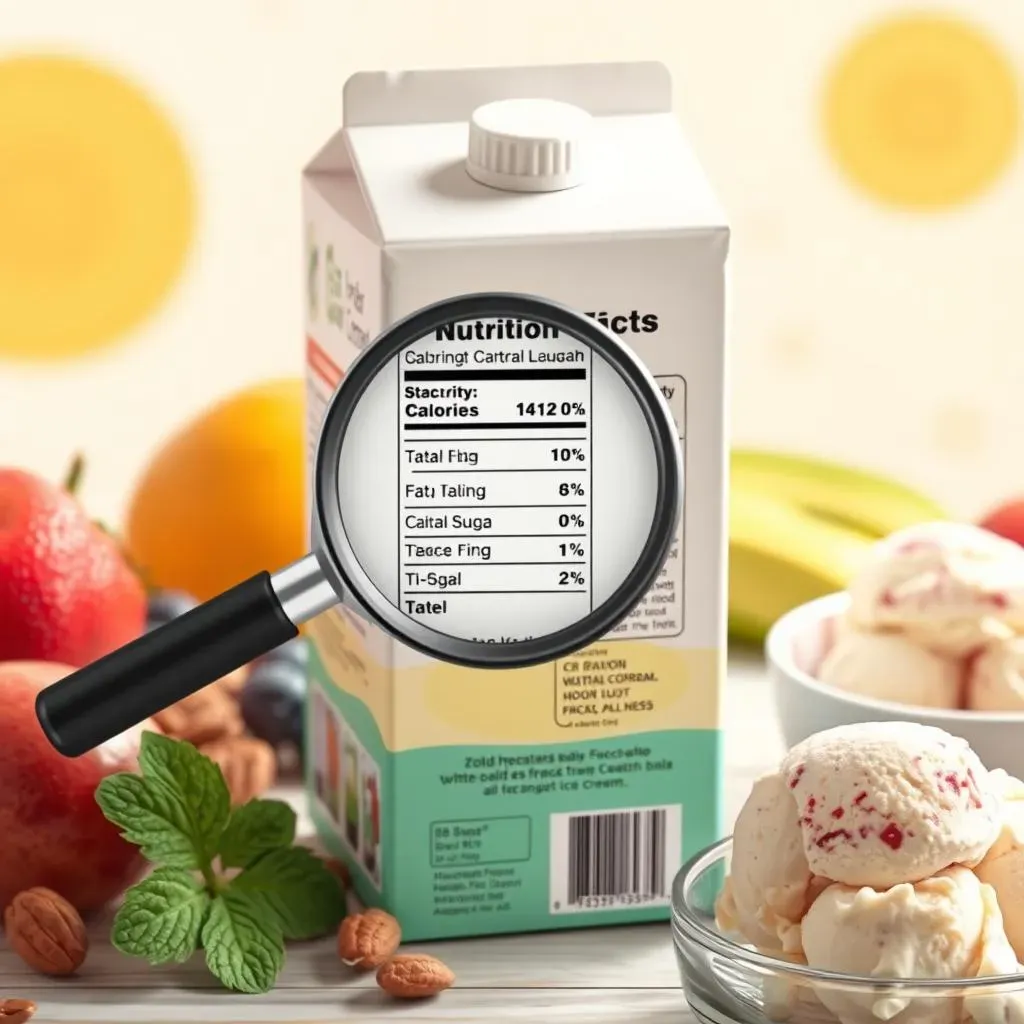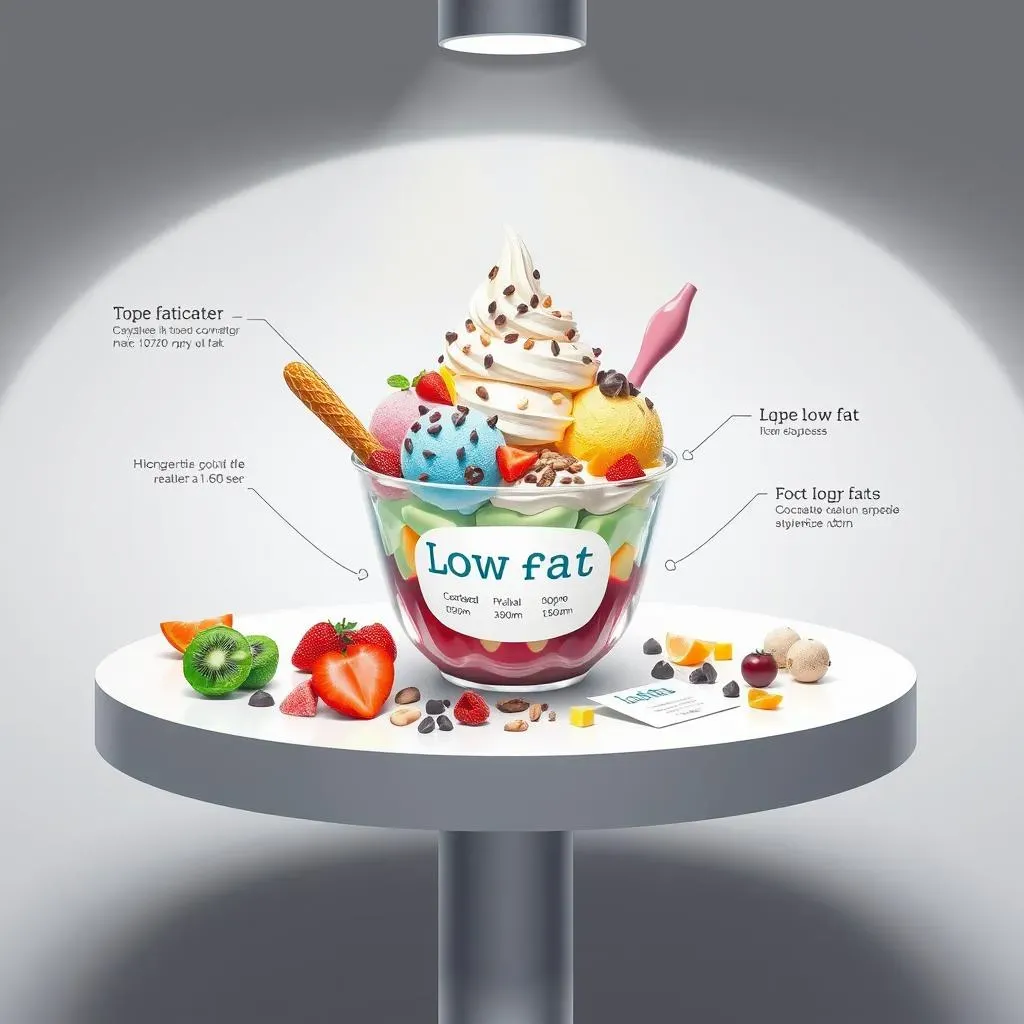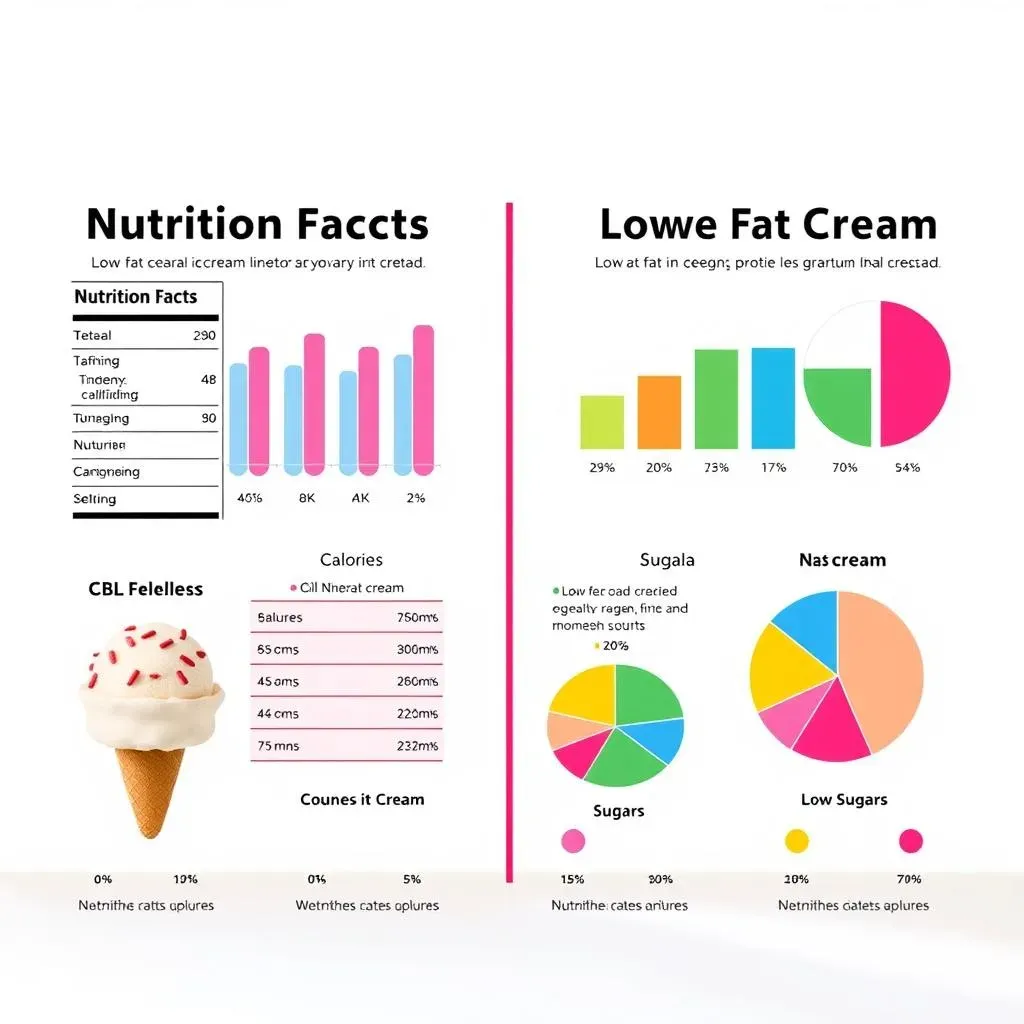Table of Contents
Ever found yourself staring at the freezer, debating between a regular scoop and the "low fat" option? You're not alone. We all crave that creamy, sweet treat, but sometimes, we're also trying to keep things a little lighter. That's where low fat ice cream comes in, promising all the flavor with fewer calories. But what's really inside that pint? This article is your guide to understanding the ins and outs of low fat ice cream nutrition facts. We'll break down the key nutrients, compare it to its full-fat counterpart, and help you make informed choices. Forget confusing labels, we are going to make it simple. We'll explore the calories, fats, sugars, and other important details so you can enjoy your dessert without the guilt, or at least, with a better understanding of what you're eating. So grab a spoon, and let's get started!
Understanding Low Fat Ice Cream Nutrition

Understanding Low Fat Ice Cream Nutrition
What Does "Low Fat" Really Mean?
so you see "low fat" on the carton, but what does that actually mean? It's not like they just wave a magic wand and the fat disappears. The term "low fat" is regulated, meaning that to be labeled as such, the ice cream has to meet specific guidelines. Usually, this means it has less than 3 grams of fat per serving. Now, compared to regular ice cream, which can pack way more fat, that’s a big difference. But, it's important to remember that "low fat" doesn't automatically mean "healthy". It just means there's less fat. We still need to look at the other stuff.
The Calorie Conundrum
So, if it’s low fat, does that mean it's low calorie? Not always. I mean, wouldn't that be great if it was that easy? Manufacturers often compensate for the lack of fat by adding extra sugar or sweeteners to maintain that creamy texture and flavor we all love. This means that even though it's low fat, it might still be surprisingly high in calories. It’s always a good idea to check the nutrition label carefully. This is where you will see the real picture. I once grabbed a "low fat" option thinking it was a guilt-free treat, only to find out it had almost the same amount of calories as regular ice cream, just more sugar. Lesson learned: labels can be tricky!
Nutrient | Low Fat Ice Cream (per serving) | Regular Ice Cream (per serving) |
|---|---|---|
Fat | Less than 3g | Varies, often 7g+ |
Calories | Variable, often 100-150 | Variable, often 150-250+ |
Sugar | Can be high, check label | Typically high |
Beyond Fat and Calories
so we've talked about fat and calories, but there's more to the story. When we look at low-fat ice cream, it's important to check out the other ingredients too. What type of sweeteners are they using? Are there any artificial additives? What about the protein and calcium content? Some brands may add extra protein to make it a more balanced option. Others may use sugar alcohols to reduce the sugar content, and these can have some digestive side effects for some people. So, it pays to be a savvy shopper and really read those labels. It's not just about fat; it's about the whole package. It's all about making choices that align with your nutritional goals.
Key Nutritional Components of Low Fat Ice Cream

Key Nutritional Components of Low Fat Ice Cream
Alright, so we've covered the basics of what "low fat" means, but let's get into the nitty-gritty of what makes up low fat ice cream nutrition facts. It's like peeking behind the curtain to see what's really going on. We know that fat is lower, but what about everything else? We're talking about the main players: carbohydrates, protein, vitamins, and minerals. It is not only about fat and calories. Carbohydrates will be your main source of energy in the ice cream, often coming from sugars and sweeteners. Then you have protein, which is important for muscle repair and keeping you full. Some brands will have more than others. And then there are the micronutrients like calcium, which is good for your bones, and other vitamins, which can also be in different quantities.
It’s also important to understand the different types of sugars used. Some brands might use natural sugars like cane sugar, while others may opt for artificial sweeteners or sugar alcohols. This makes a big difference in how your body processes the ice cream, and it can impact things like blood sugar levels and digestion. For example, sugar alcohols can cause bloating for some people. It’s not one-size-fits-all. So, when you’re looking at the label, don't just glance at the big numbers, take a moment to understand the different components and how they might affect you.
Component | Typical Role in Low Fat Ice Cream | Considerations |
|---|---|---|
Carbohydrates | Provide energy, sweetness | Includes sugars and sweeteners, watch for added sugars |
Protein | Contributes to satiety, muscle repair | Amounts vary by brand, can be a plus |
Vitamins & Minerals | Support various body functions | Calcium is a common one, others may vary |
Sweeteners | Provide sweetness without high calories | Can include artificial ones or sugar alcohols, may have side effects |
Comparing Low Fat Ice Cream Nutrition Facts to Regular Ice Cream

Comparing Low Fat Ice Cream Nutrition Facts to Regular Ice Cream
so we've been chatting about low fat ice cream, but how does it really stack up against the regular stuff? It's like comparing apples to slightly less fatty apples, right? The biggest difference, obviously, is the fat content. Regular ice cream is often loaded with it, which is why it has that super rich, creamy texture. But that also means it's higher in calories and saturated fat, which, let's be honest, isn't great for our hearts. Low fat ice cream tries to mimic that creamy experience but with less fat. This often means they use different ingredients to make it feel as good as the real deal. It's a bit of a balancing act, like trying to keep a toddler from throwing their food across the room. They are both ice cream but they have some key differences.
When you're comparing the two, it's not just about the fat. You'll also see a difference in the sugar content. Sometimes, to make up for the lack of fat, they add more sugar to the low fat version, which can be a bummer. It's like they take away with one hand and give with the other. I've seen some low fat options that actually have more sugar than their regular counterparts, which is a real eye-opener. So, it's super important to check the labels closely. Don't just assume that low fat is automatically healthier. It's about understanding what you are actually putting into your body.
Nutrient | Regular Ice Cream (per 1/2 cup) | Low Fat Ice Cream (per 1/2 cup) |
|---|---|---|
Calories | 200-300 | 100-180 |
Total Fat | 10-20g | 2-7g |
Saturated Fat | 6-12g | 1-4g |
Sugar | 20-30g | 15-25g (can be higher) |
Making Informed Choices with Low Fat Ice Cream Nutrition

Making Informed Choices with Low Fat Ice Cream Nutrition
so we've gone through the nitty-gritty of low fat ice cream nutrition facts, and it's time to put that knowledge to good use. It's not about demonizing ice cream; it's about making smart choices that fit your lifestyle. When you're standing in the freezer aisle, feeling overwhelmed by all the options, remember these key points. First, always check the serving size. It’s easy to think you’re eating one serving, when you might actually be eating two. Then, look at the total calories, fat, and sugar content per serving. Compare different brands and options. You might be surprised by the differences. Don't just fall for the "low fat" label; it's what's inside that really counts.
Also, pay attention to the ingredient list. Are there artificial sweeteners or additives that you prefer to avoid? Some people might be sensitive to certain ingredients, like sugar alcohols, which can cause digestive issues. If you have particular dietary needs or restrictions, make sure the ice cream aligns with those. It's also helpful to think about what you're pairing it with. If you are having a small serving of ice cream after a healthy meal, it's different than eating a whole pint while watching TV. It's all about balance and moderation. And remember, treat yourself. It's okay to have ice cream, just make sure you know what you're eating, and enjoy it!
Action | Why It Matters |
|---|---|
Check Serving Size | Ensures you're not overestimating your intake |
Compare Nutrition Labels | Helps choose options that align with your goals |
Read Ingredient List | Avoids unwanted additives or allergens |
Consider Overall Diet | Balances the treat with other healthy choices |
The Final Scoop on Low Fat Ice Cream Nutrition
Navigating the world of low fat ice cream doesn't have to be a nutritional minefield. Armed with the knowledge of what's actually in your frozen treat, you can make choices that align with your health goals and taste buds. Remember, it's not about deprivation, but about being informed. So, go ahead, enjoy that scoop, and know that you're doing it with a clear understanding of those all-important nutrition facts. And who knows, maybe you'll even impress your friends with your newfound ice cream expertise.
